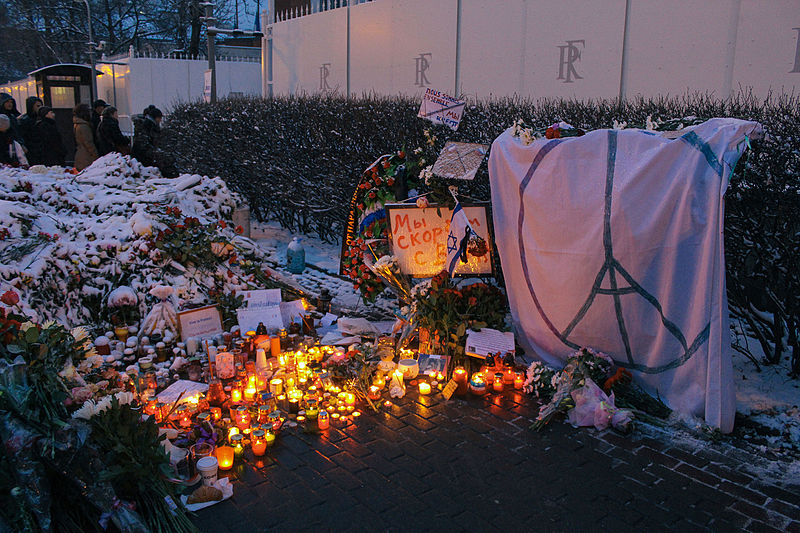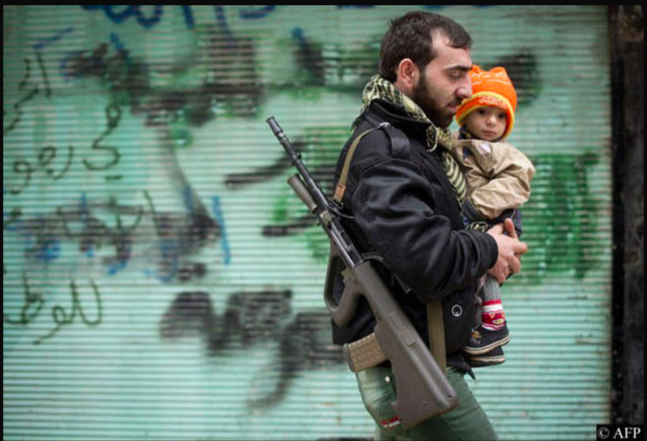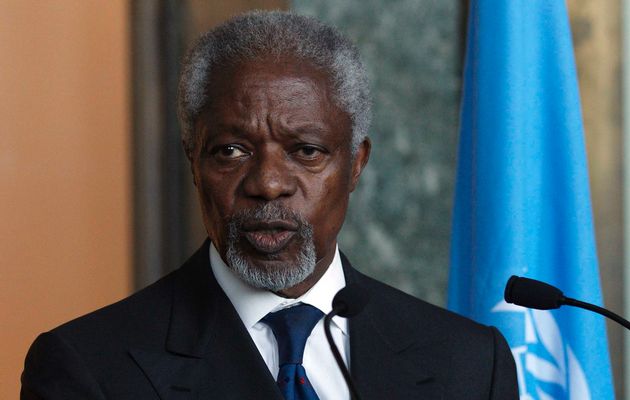By: Joelle Ferreira
Since the beginning of March 2011, revolts in Syria have rapidly worsened. Last month, Navi Pillay, the United Nations High Commissioner of Human Rights delivered a disturbing report regarding Syria. Her testimony to the United Nations Security Council portrays a turbulent picture. Since December 2, over 200 people have been killed: altogether an estimated 5000 people have died, 300 of which were children. 10,000 Syrians have fled into neighboring Turkey, and at least 14,000 civilians have been injured or arrested. According to Ms Pillay, the Syrian military has also received orders to shoot unarmed protestors without warning.
As the violence escalates, questions regarding the international community’s cautious approach to intervention have arisen. Arguments have been made that the international community’s lack of aggression is only providing the Assad regime with more time to commit greater human rights violations.
That being said, the question remains, is military intervention the best option for relieving the Syrian crisis? Utilizing the Just War Theory model, the purpose of this article is to examine whether intervention will relieve or exacerbate the conflict.
The Just War Theory
Developed in the thirteenth century, the Just War Theory was founded within the Christian tradition as a set of guidelines to determine under which conditions it is acceptable to enter into a state of war. Although violence is in itself undesirable, the use of war is sometimes necessary. Therefore, the Just War Theory is realistic in the sense that it recognizes the imperfections of the world, and the moral consequences that accompany them. The thoroughness of the Just War methodology caused the theory to expand into a secular and universal set of guidelines. There are three categories which underlie Just War Theory: jus ad bellum (the conditions under which the use of military force can be justified); jus in bello (the conditions for which war must be conducted in an ethical manner); and jus post bello (the justice which must be achieved when the war is over).
These guidelines remain pertinent when making the decision to enforce armed intervention against a state. In addition to the obvious physical ramifications that accompany military intervention, there is a list of accompanying factors. These include the jeopardizing of state sovereignty, the damaging of natural resources, and the monetary cost of intervention. Therefore, the decision to intervene should be made with extreme caution and careful planning.
The following six principles fall within the jus ad bellum category, and are crucial to both the legal and moral basis of a just war intervention: just cause, right intention, proper authority, proportionality, probability of success, and last resort. These principles will be examined individually along with the events taking place in Syria.
Just Cause
Just cause is arguably the most important guideline as it sets the foundation for all other principles. A major reason for interfering with a state’s sovereignty would be the breakdown of good governance between a state and its citizens. In order for a state to be legitimate, there are three basic prerequisites it must meet. Firstly, the state must take reasonable action to uphold the human rights of its citizens. Secondly, the state must respect the sovereignty of other states; its internal instability must not pose a threat to regional or international peace. Lastly, the legitimacy of a state must be recognized by the international community, which in the modern era has primarily come in the form of the United Nations. If a state is no longer committed to respecting and protecting the interests of its people however, it is permissible for military intervention to take place.
Concerning the situation in Syria, it has become increasingly evident that Assad is unwilling to stop the crackdown his regime has enforced against protestors. Therefore, his regime is unable to uphold the basic rights of his citizens. In a recent interview with Barbara Walters, Assad stated, “they’re not my forces […] They are military forces (who) belong to the government.” Assad’s deflection of responsibility for the atrocities currently taking place in Syria, make military intervention a viable option to take if lives are to be protected from state abuse. Even with the presence of an Arab League observation force examining the most restless regions of Syria, indiscriminate killings continue in Homs, Hama, and Deraa. State violence and the use of military hardware by the Syrian regime has become increasingly flagrant, with observer videos clearly showing the presence of tanks in residential areas. Contributing to instability within Syria, thousands of soldiers, including a number of high-ranking colonels, have defected and formed the Free Syrian Army, pushing the country towards civil war.
Right Intention and Proper Authority
Whereas just cause is concerned with responding to a situation appropriately, right intention questions who has the right to intervene, and under what circumstances. The UN Security Council, primarily organized to maintain international peace and security, remains a cumbersome mechanism for enforcing right intention as states have the power to veto decisions which do not serve their best interests. This remains true in the case of Syria. In November, Russia and China vetoed a draft resolution against the Syrian regime that contained the threat of international sanctions. The U.S ambassador Susan Rice accused both countries of doing so in order to sell arms to Assad, rather than protecting the rights of the Syrian people.
Although Russia denied these claims, it has a long history of allying with Syria and has mobilized its military resources to defend the Assad house since 1970. In return, Moscow maintains a Mediterranean base for its navy in Tartus. Russia has also invested heavily in Syrian infrastructure, energy, and tourism, an expenditure that totaled $19.4 billion in 2009. Stroitransgaz, a Russian pipeline company, is also building a natural gas plant located near Homs, a focal point of the revolt. Thus, Russia and Syria have developed a strong bilateral relationship that Russia does not want to jeopardize.
As a result, both Russia and China are reluctant to become involved in the international movement to weaken the Assad regime, fearing the sanctions will eventually lead to armed intervention. A Russian Security Council resolution regarding the crisis fell short of calling for
any hard international pressure on Assad. Rather, it called on both the government and opposition to immediately cease the violence and vaguely threatened possible sanctions. Both the Russian and Chinese UN Security Council ambassadors have stated that sanctions would not alleviate the conflict, but rather complicate it. Although it is too early to tell, proper authority may ultimately be provided by a Security Council resolution. For now however, Russia and China still maintain the belief that Syria should sort out its own problems.
Authority for an international intervention to alleviate the Syrian crisis could also come through a few other forms. As a regional body spanning North Africa and the Middle East, the Arab League could call for an intervention in Syria on humanitarian grounds. Furthermore the League, although lacking observer experience, has itself been involved in international intervention efforts. Ironically, it was the Syrian-led intervention in Lebanon during the latter’s civil war in 1976 that provides the backdrop for military missions by the Arab League. Such an intervention, although highly unlikely given both geo-political realities and the dubious standard that would be set by an Arab-on-Arab intervention, has been called for by the Syrian National Council opposition group.
NATO, given the success of its air campaign in Libya could quite possibly redeploy its military resources for intervention in Syria. While NATO member nations are not keen on sending ground forces, given the violent precedent set by America’s invasion of Iraq, an air-based mission imposing a no-fly zone and targeting command and control centers would be conceivable. That being said, two primary factors are at play when considering a Western led operation in Syria. The first and most prominent of which is UN Security Council authorization for intervention. As in Libya, for any such intervention to be viewed as legally justified by the international community the five permanent members would have to agree or abstain to a vote regarding the relevant resolution. Given NATO’s desire to maintain a mantel of legitimacy, the organization would, in all foreseeable situations, first ensure the legality of its intervention under international law. The second, and less discussed feature regarding the possibility of military intervention in Syria is the ripple effect such action would have on regional relations. As a key ally of Iran and a transit point for arms shipments from the Islamic Republic to its proxy militia Hezbollah in Lebanon, any such action against Assad could lead to regional instability. Given the ongoing tension regarding the Straight of Hormuz and Iranian threats to close of the world’s biggest oil shipment passages the threat of regional instability is ever-present.
Proportionality and the Probability of Success
Prior to initiating armed intervention, the conceivable amount of good which could result from a just war must be measured against the amount of destruction and human suffering that may also occur. Some of the factors which need to be considered when thinking about proportionality include weighing whether the risks are disproportionate to the possible gains of intervening, and whether the human rights violations are grave enough to warrant military action. How success is determined depends on the long and short-term impact of intervention. Success could be gauged by a variety of measurements, including how many lives are immediately saved or through the establishment of the foundations for political stability in the future.
A comparison between Libya and Syria is an effective tool when discussing proportionality and the probability of success. Muammar Gaddafi’s loss of credibility as a leader, as well as the strength of the Libyan opposition increased the chances of overthrowing the regime in a reasonable timeframe. Gaddafi had lost much of his popular support due to his regime’s harsh treatment of protestors in the initial days of the uprising. Before his eventual capture and death, his support had dwindled to his core tribal allies and foreign mercenaries. In addition to the domestic situation, Gaddafi had few regional allies, thus making it easier for the UN Security Council to pass a resolution legitimizing intervention. Furthermore, crucial regional support for the intervention was granted by the Arab League when it asked the UN Security Council to impose a no-fly zone over Libya in order to protect civilians.
Libya’s National Transitional Council (NTC) presented a strong, unified opposition to the Gaddafi regime, which was quick to rally armed supporters with the assistance of NATO. This oppositional body also maintained a clear and unwavering goal, the overthrow of Gaddafi and his cronies.
Although Assad is increasingly losing legitimacy both domestically and in the international sphere, he still maintains a strong hold over his regime. The Syrian regime has remained steadfast in its defiance of international calls for restraint and dialogue for two core reasons. The first and most publicized of which is the continued loyalty of core units within the Syrian army and security forces. While much light has been shed upon the fact that senior members of the military and security forces hail from the Alawite religious minority little has been written regarding the impact of this reality. These security and military leaders view the continuance of the dominance of their religious group as concretely tied to the survival of the co-religionist Assad regime. The fact that both material and economic patronage flows down to the security and military services, monetary incentives are also at play in keeping these leaders loyal to the incumbent regime. The second and less discussed factor is the relationship between Assad and Syrian business elites. Since Bashir al-Assad assumed power after the death of his father in 2000 he has curried favor through economic programs aimed at enhancing the wealth of the nouveau riche including access to lucrative infrastructure contracts. This small but highly influential group, in addition to the older established families also view their future as concretely tied to Assad. Thus, unlike Gaddafi, Assad enjoys the backing of two strong and determined strata of the Syrian political scene.
In Syria, the opposition parties are calling for a democratic government, yet they remain disorganized in their actions. The Syrian National Council (SNC), a political group comprised of local resistance members and exiles in foreign countries, remains at odds with the National Coordination Committee (NCC), another opposition bloc. Together, these two parties form the biggest faction of the Syrian opposition, yet they maintain divergent views on two pressing issues: dialogue with the regime and foreign intervention. The Free Syrian Army, a group of 25,000 defected soldiers further contribute to the lack of unity among the opposition. Becoming more daring in their attacks, the Free Syrian Army has been targeting military checkpoints and Syrian command centers. This staunchly goes against the beliefs of the SNC, who have been bent on keeping the protests peaceful. In this fractious state, Syria’s opposition remains extremely vulnerable and disjointed.
The geographical position of Syria also lends itself to the amount of regional harm which could be created by this crisis. Know as the “beating heart of the Middle East,” it is surrounded by neighboring Turkey, Lebanon, Iraq, and Jordan. The collapse of the Assad regime could lead to civil war, Islamist takeover, and further discord between Middle Eastern states—outcomes which could severely affect their political and economic wellbeing.
Though Libya is now moving towards a representative governance system, it took eight chaotic and bloody months to overthrow Gaddafi. The collapse of the regime ended with an estimated 30,000 Libyans dead, 50,000 wounded, and 4,000 missing. Given the complexities of Syria’s current situation, it could take an even longer period to topple Assad.
Last Resort
The final principle of the Just War Theory is the utilization of armed intervention as a last resort. A just war can only be implemented if all other avenues have been exhausted. Many among the Syrian opposition point to the failure of the current Arab League monitor mission as a pretense for armed intervention. Whether the call is for a force composed of Arab League militaries or a Libyan-style international coalition, pressure has begun to mount on the international community. Again, as stated previously the divisiveness of the Syrian opposition has ensured that calls by the SNC for international intervention have been delegitimized by both the NCC and Free Syrian Army. The two latter factions have called for a more limited international role in the form of a no-fly zone and the creation of a safe haven for the Free Syrian Army near the country’s northern border with Turkey. Thus, it seems as if direct and sustained intervention characterized by a more robust involvement of the international community has yet to reach the definition of last resort.
Conclusion
For military intervention to be a credible and legitimate course of action, all six of the above criteria need to be fulfilled under the just war analysis. As alarming and painful as the Syrian unrest continues to be, the criteria of the Just War Theory illuminate how complex the situation in Syria truly is. What remains evident is that there is great potential for sectarian violence, civil war and cross border instability. The Arab League observer mission has yet to provide any recommendations to alleviate these aforementioned issues. Furthermore, the mission and the institution itself have lost legitimacy due to perceived ineptness, lack of experience, and coordination with the incumbent regime. The leaders of the Free Syrian Army and the Syrian National Council have both called on the involvement the United Nations observers to bolster or replace those of the Arab League. France has also joined the fray accusing the mission of being manipulated by the Syrian regime while the head of the Arab League’s taskforce on Syria. Prime Minster Al-Thani of Qatar admitted that the mission has made various “mistakes”. If military intervention is going to occur in order to achieve political stability, it would need more than just hard power. Non-military assets including post-conflict reconciliation and developmental are crucial. Given the looming failure of the Arab League observer mission, these assets are not readily available at the moment. Therefore, although inaction by the international community is having its costs, poorly conceived military action without additional post-conflict planning could cause greater damage in Syria.



